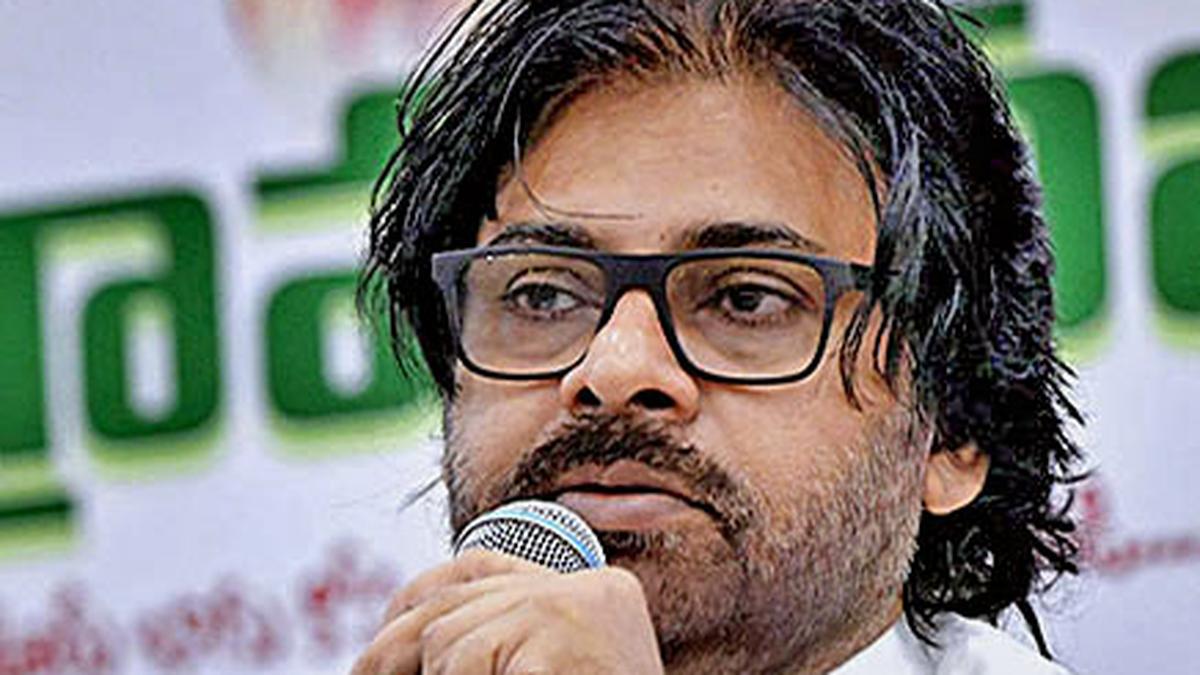In the bustling corridors of Amaravati, amid discussions of fiscal challenges and opportunities, Deputy Chief Minister K. Pawan Kalyan recently shared an inspiring perspective on the Union Budget 2025-26. His words seem to resonate with hope for Andhra Pradesh, a sentiment that reflects not only a summarization of numbers but a deep-seated aspiration for progress that many young Indians share today. As the nation strains under global pressures, could this budget be the turning point we’ve all been waiting for?
A Strategic Move Towards National Progress
The recent Union Budget presented by Finance Minister Nirmala Sitharaman has sparked significant discussion across India. It is not just another financial plan; it is a framework aimed at advancing the nation towards the vision of 'Viksit Bharat' by the year 2047. This ambitious goal reflects a commitment to transform India into a developed nation, and the budget is a crucial step in that direction.
Key Highlights of the Budget
- Alignment with 'Viksit Bharat': The budget is aligned with the vision of a developed India by 2047. It aims to uplift various sectors without political biases.
- Holistic Development: There is a clear focus on holistic development across multiple sectors, including agriculture, women empowerment, and support for the middle class.
- Non-Political Gain: K. Pawan Kalyan praised the budget for its emphasis on non-political gain, highlighting that it aims to benefit all citizens, regardless of their political affiliations.
Kalyan's insights into the national strategy reflect a grassroots perspective. He noted that the budget includes provisions specifically tailored to benefit farmers, women, the middle class, and the youth. This multi-sectoral approach is essential for comprehensive national progress.
Financial Relief and Support
A standout feature of the budget is the introduction of a ₹12 lakh Income-Tax exemption. This measure is expected to provide significant relief to the salaried middle class. Furthermore, there are plans for ₹10 lakh credit cards allocated for micro, small, and medium enterprises (MSMEs). This financial assistance is a vital step towards fostering economic self-reliance among these groups.
Additionally, Kalyan emphasized the importance of initiatives aimed at the agriculture sector. For instance, the PM Dhan Dhanya Yojana is designed to enhance agricultural practices in less developed districts. It will introduce modern irrigation and storage facilities, which are crucial for improving productivity. The Kisan Credit Card limit has also been raised to ₹5 lakh, easing access to credit for farmers.
Investment in Infrastructure
The budget also addresses ongoing developments in Andhra Pradesh. An allocation of ₹5,936 crore for the Polavaram project and a balance grant of ₹12,157 crore are set to ensure its swift completion. This reflects the Centre's commitment to state development. Moreover, Kalyan highlighted a grant of ₹3,295 crore for the Visakhapatnam Steel Plant and ₹730 crore for port expansions, which are expected to enhance trade and industry dynamics.
"This budget reflects our commitment to uplift every sector without political biases." - K. Pawan Kalyan
As Kalyan pointed out, the financial support provided through this budget is crucial for Andhra Pradesh's recovery from past challenges. The state is making strides towards progressive governance, and this budget plays a pivotal role in that journey.
Key Provisions for Economic Empowerment
The recent Union Budget has introduced several key provisions aimed at economic empowerment. These initiatives focus on providing relief to the middle class, supporting small and medium enterprises (SMEs), and fostering self-reliance among various demographics.
Income-Tax Exemption for the Middle Class
One of the most notable highlights is the ₹12 lakh Income-Tax exemption for the middle class. This is a significant relief for salaried individuals who often feel the burden of high taxes. With this exemption, individuals can retain more of their hard-earned money. It’s a welcome change, isn’t it?
Support for MSMEs
The budget also includes provisions for micro, small, and medium enterprises (MSMEs). A credit card allotment of ₹10 lakh is set aside for these businesses. This financial support is crucial, as MSMEs are often the backbone of the economy. They create jobs and stimulate local growth. But without proper funding, many struggle to survive. This initiative aims to change that.
Empowering Women Entrepreneurs
Women entrepreneurs are also a focus. The budget sets a target of ₹2 crore in loans for SC/ST women entrepreneurs. This is a vital step towards enhancing women's participation in the economy. It’s about time we see more women leading businesses, don’t you think?
Fostering Self-Reliance
These financial tools are not just numbers on a page. They represent a broader vision of self-reliance. As K. Pawan Kalyan stated,
“This financial support paves the way for a much-needed self-reliance among our youths and entrepreneurs.”This sentiment captures the essence of the budget’s objectives.
Conclusion
In summary, the major provisions in the budget aim to provide significant financial relief for the middle class and ambitious support for SMEs and women-led enterprises. These measures are designed to stimulate growth and drive economic rejuvenation in the country.
With these initiatives, the government is making strides towards a more inclusive economy. The focus on specific demographics shows a commitment to uplift those who need it most. This could be the turning point for many aspiring entrepreneurs and established businesses alike.
Agricultural Initiatives: Feeding Innovation
In a world where food security is paramount, investment in agriculture is crucial. The recent initiatives by the government highlight this necessity. Programs like the PM Dhan Dhanya Yojana aim to uplift backward districts. This initiative seeks to enhance agricultural practices and ensure that farmers have access to modern tools and techniques.
Key Programs to Note
- PM Dhan Dhanya Yojana: This program is designed specifically for backward districts. By focusing on these areas, the government hopes to bridge the gap in agricultural productivity.
- Kisan Credit Card Limit Increase: The Kisan Credit Card limit has been raised to ₹5 lakh. This change allows farmers to access more credit for their agricultural needs.
- Modern Irrigation and Storage Facilities: Investments in irrigation systems and storage solutions are essential. They help in enhancing productivity and reducing post-harvest losses.
But why is this investment so vital? As noted by Deputy Chief Minister K. Pawan Kalyan, “
Ensuring our farmers have access to modern facilities is key to our agricultural revival.” This statement underscores the importance of equipping farmers with the right tools to thrive in a competitive environment.
The Bigger Picture
Modernizing agricultural practices can lead to significant economic benefits. When farmers have access to better resources, they can produce more. This increase in production not only benefits the farmers but also contributes to the overall economy. It’s a win-win situation.
Furthermore, the focus on agriculture is not just a short-term strategy. It reflects a long-term vision. The government’s commitment to uplift the agricultural sector is crucial for the future of farmers in Andhra Pradesh. The allocation for the PM Dhan Dhanya Yojana, while not explicitly mentioned, is expected to play a significant role in this progress.
As we look forward, it’s clear that these initiatives are steps towards a more sustainable agricultural framework. The increased credit limits and modern facilities are just the beginning. They pave the way for a future where farmers are empowered, and food security is ensured.
In conclusion, the focus on boosting agriculture through modern practices and enhanced credit facilities is crucial. It’s about creating a robust agricultural ecosystem that can sustain the needs of the population. With the right support, farmers can flourish, and the agricultural sector can become a pillar of economic strength in the region.
Regional Developments and Projects
In a significant move for Andhra Pradesh, the Central government has allocated a staggering ₹5,936 crore for the Polavaram project. This funding is not just a number; it represents a deep commitment to the region's prosperity. The Polavaram project is crucial for irrigation and domestic needs. It aims to improve water supply and agricultural output, which are lifelines for many communities.
Infrastructure Boost
The focus on infrastructure doesn't stop at the Polavaram project. There are additional grants aimed at enhancing industrial capabilities:
- Visakhapatnam Steel Plant: ₹3,295 crore
- Port Expansions: ₹730 crore
These allocations highlight a broader strategy to improve trade and industry in the state. Improved infrastructure can lead to better connectivity, which is essential for economic growth. It raises an important question: What would happen to local businesses without such support?
Commitment to Growth
As Andhra Pradesh Deputy Chief Minister K. Pawan Kalyan stated,
"Our commitment to infrastructure will pave the way for Andhra Pradesh's economic renaissance."This statement encapsulates the vision behind these funding decisions. The government is not just throwing money at problems; they are investing in the future.
Infrastructure projects are vital for growing trade and industry in Andhra Pradesh. They create jobs, stimulate local economies, and improve the quality of life for residents. With the Polavaram project and other initiatives, the state is poised to make significant strides in these areas.
Funding Allocation Significance
The recent budget reflects a well-thought-out approach to regional development. The funding allocations are not merely financial figures; they symbolize a commitment to uplift the state. The focus on both irrigation and industrial growth demonstrates a balanced strategy. It’s not just about immediate gains; it’s about long-term sustainability.
With the Polavaram project, the aim is to ensure that water resources are effectively managed. For a state where agriculture plays a vital role, this is crucial. The grants for steel plants and ports will enhance industrial capabilities, allowing Andhra Pradesh to compete on a larger scale.
In conclusion, these developments signal a promising future for Andhra Pradesh. The funding for the Polavaram project and other infrastructure initiatives reflects a commitment to regional prosperity. As the state moves forward, it will be interesting to see how these investments shape its economic landscape.
Conclusion: A Future of Hope and Progress
The recent Union Budget holds significant promise for the development of Andhra Pradesh. It is not just a financial document; it reflects a vision for a prosperous future. Deputy Chief Minister K. Pawan Kalyan has highlighted several key provisions aimed at uplifting various sectors, including farmers, women, and the middle class. These initiatives could potentially reshape the economic landscape of the state.
One major impact of this budget is the substantial relief for the salaried middle class through the proposed ₹12 lakh Income-Tax exemption. This move is expected to boost disposable income, allowing families to invest more in their futures. Additionally, the financial support for small and medium enterprises (SMEs) through credit cards and loans for women entrepreneurs is a step toward fostering economic self-reliance. Such provisions are vital for stimulating local economies.
But what does this mean for the average citizen? It means that everyone has a role to play. The government can lay the groundwork, but active participation from citizens is essential. There’s a call to action here. Citizens are encouraged to engage with these policies, understand their benefits, and utilize the resources provided. How can one contribute? By staying informed, participating in local governance, and voicing their needs and suggestions. This engagement is crucial for ensuring that the benefits of the budget reach those who need them most.
Moreover, this budget serves as a reminder of our collective responsibility towards progress. The phrase from K. Pawan Kalyan resonates:
“Our journey towards progress is collective; it requires the efforts of all stakeholders.”This underscores the idea that development is not solely the government’s responsibility. It requires a partnership between the government and its citizens. When both parties work together, the potential for growth is immense.
In conclusion, the Union Budget is a beacon of hope for Andhra Pradesh. It lays the groundwork for significant development and progress. As citizens, it is our duty to engage actively with these policies and work alongside the government. Together, we can build a brighter future, not just for ourselves, but for generations to come. The path forward is clear: let us embrace this opportunity with hope and determination.
TL;DR: The Union Budget 2025-26, praised by K. Pawan Kalyan, promises substantial support for various sectors and is seen as a stepping stone towards national development and upliftment of Andhra Pradesh.



